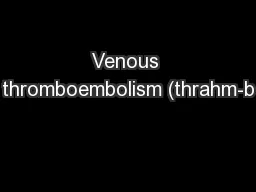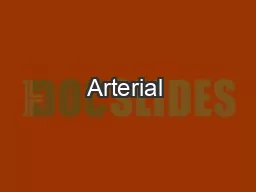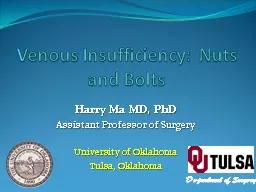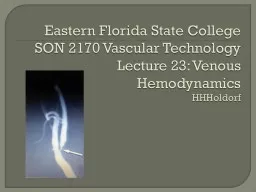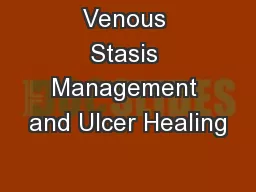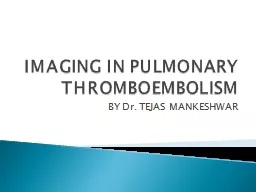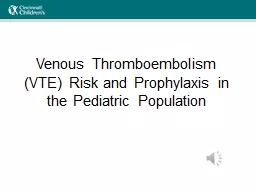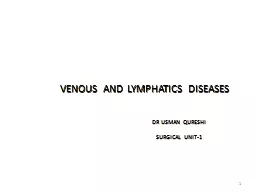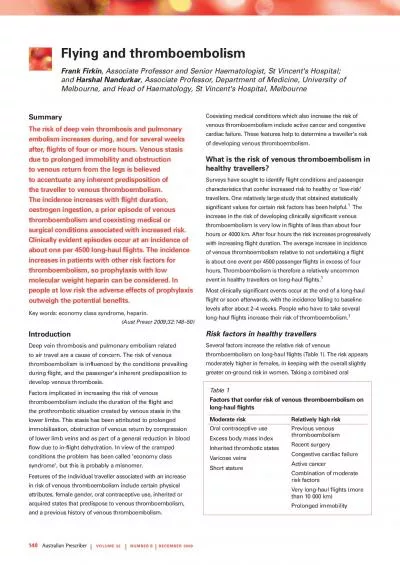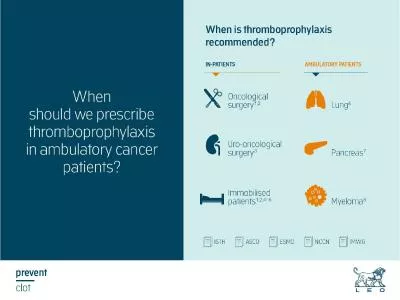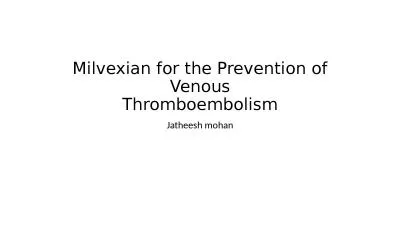PDF-Venous thromboembolism (thrahm-b
Author : lindy-dunigan | Published Date : 2016-05-21
What is VTE VTE describes two related conditions deep vein throm bosis DVT and a more serious complication called pul monary embolism PE which is an emergency
Presentation Embed Code
Download Presentation
Download Presentation The PPT/PDF document "Venous thromboembolism (thrahm-b" is the property of its rightful owner. Permission is granted to download and print the materials on this website for personal, non-commercial use only, and to display it on your personal computer provided you do not modify the materials and that you retain all copyright notices contained in the materials. By downloading content from our website, you accept the terms of this agreement.
Venous thromboembolism (thrahm-b: Transcript
What is VTE VTE describes two related conditions deep vein throm bosis DVT and a more serious complication called pul monary embolism PE which is an emergency Both are blood clots in the. The Challenge of Edema. S. . Lakhanpal . MD, FACS. President & CEO. Center for Vein Restoration. Case Presentation. 67 year old male. Presents with Left Calf . Ulceration. Duration. : 2 months. Associated . Update: November 2016. . Steven E. Zimmet, MD . RPVI RVT FACPh. President, ABVLM. Disclosures. President, ABVLM. Overview. Background: VLM. Testing of Foundation Knowledge: ABMS specialties. ABVLM . . A Comprehensive Review . Assessment & Management . 1. 2015 AXXESS. UNAUTHORIZED USE IS PROHIBITED. Objectives. 2. Understand Arterial & Venous disease. Understand the etiology of . . lower extremities ulcers. Dr. . shweta. S. . Phadke. .. CHRONIC VENOUS INSUFFICIENCY. (CVI). CVI. Occurs when the vein valves become dysfunctional and impairs venous blood return.. Affects up to 20% of adults.. By age 50 ~40% of women and 20% of men have significant vein problems.. Harry Ma MD, PhD. Assistant Professor of Surgery. University of Oklahoma. Tulsa, Oklahoma. Department of Surgery. Disclosures. None. Outline and Objectives. Defining chronic venous disease. Clinical manifestations. HHHoldorf. Venous physiology and Hemodynamics. Venous Resistance. Peripheral venous and arterial resistances are similar. Both arteries and veins carry same amount of blood. This Paradox is explained by the “collapsible” nature of the venous wall.. Evidence base and expert opinion put into practice. Christine Herb, . MS, FNP-C, CWON. Syracuse VA Medical Center. June 13, 2014. Venous. vs.. . Arterial. . vs. . Neuropathic. 1. st. it is critical to correctly determine the etiology!. BY Dr. TEJAS MANKESHWAR. Pulmonary embolism refers to the embolic occlusion of pulmonary artery.. Pulmonary embolism is the third most common acute cardiovascular disease after myocardial infarction and stroke.. Objectives. Define VTE and discuss the incidence of VTE. Articulate risk factors for VTE. Discuss primary and secondary prevention. Review current guidelines. A Case…. A 12-year-old male with history of intractable epilepsy underwent right-sided craniotomy with grid placement for seizure mapping. He has a PICC line in place due to difficult IV access, and he is on bedrest. S. DR USMAN QURESHI. SURGICAL UNIT-1. 2. presentation outlines. Intoduction. Venous and lymphatic drainage of extermities.. Pathophysiology and Mx of specific venous diseases.. .Varicose vein. VOLUME 32 MBE ECEMBE 2009www.australianprescriber.com molecular weight heparin or oral warfarin reduces the risk of venous thromboembolism. Low molecular weight heparin injected immediately be , Andre Chou , Hubert Stępak Department of Vascular and Endovascular Surgery, Angiology, and Phlebology, www.cardiologyjournal.org COVID-19 Cardiology Journal2021, Vol. 28, No. 6, 941–953DOI: 1 Lyman. GH, . Bohlke. K, . Khorana. AA, et al. . Venous. . Thromboembolism. . Prophylaxis. and . Treatment. in . Patients. . with. Cancer: American . Society. . of. . Clinical. . Oncology. Thromboembolism. Jatheesh mohan. BACKGROUND. Factor . XIa. inhibitors for the prevention and treatment of venous and arterial thromboembolism may be more effective and result in less bleeding than conventional anticoagulants..
Download Document
Here is the link to download the presentation.
"Venous thromboembolism (thrahm-b"The content belongs to its owner. You may download and print it for personal use, without modification, and keep all copyright notices. By downloading, you agree to these terms.
Related Documents

